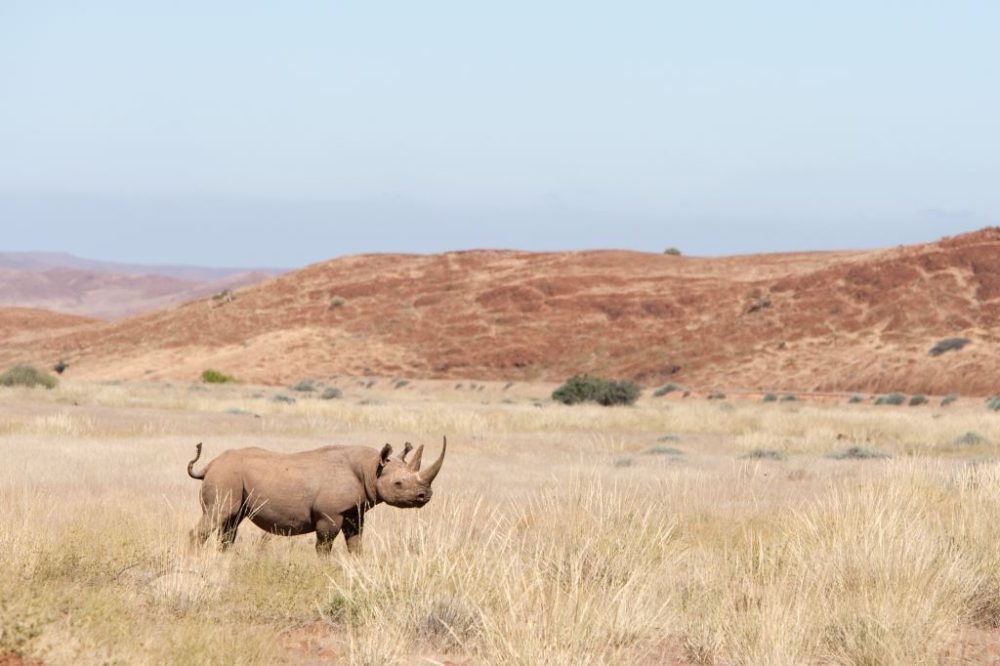Two days before Christmas last year, trackers working for Save the Rhino Trust, in northwest Namibia, found the carcass of a rhino cow that had very recently been shot and killed. Her horns had been cut off and taken away. Her orphaned calf was rescued but died a couple of days later, having become too severely malnourished and weak.
 There was a small silver lining to this all-too-frequent event. One of the members of the local Anabeb community, which benefits a great deal from the tourists who visit that part of Namibia specifically to try to see the unique desert-dwelling black rhinos, gave information that led to the swift arrest of the alleged poacher, the recovery of the horns and the confiscation of a firearm. The suspect is in custody awaiting a date for trial.
There was a small silver lining to this all-too-frequent event. One of the members of the local Anabeb community, which benefits a great deal from the tourists who visit that part of Namibia specifically to try to see the unique desert-dwelling black rhinos, gave information that led to the swift arrest of the alleged poacher, the recovery of the horns and the confiscation of a firearm. The suspect is in custody awaiting a date for trial.
Christmas is the worst time of year for rhinos. During the last three years, we’ve seen a big spike in poaching in November and December. In early 2013, the rate was just under two per day in South Africa. In the last week of November, the rate was four rhinos per day. Friday 29 November was a truly Black Friday for rhinos.
Full moons are also bad news for rhinos. Poachers use the bright moonlight to track their prey, make the kill, hack off the horns, and make their getaway. We can never look up at the moon with the same innocent pleasure that we used to.
There’s no detailed research on why poaching spikes immediately before Christmas, but many have suggested that it is due to users in East Asia, mainly in Vietnam and China, placing orders with their dealers for rhino horns: the most coveted and statement-making Christmas gift or Chinese New Year’s present.
We’re not King Canute. We know we can’t cancel Christmas and we know we can’t indefinitely postpone the Chinese New Year. What we can try to do is deliver behaviour change campaigns in Vietnam and China. We can, for example, encourage wealthy buyers to choose a smartphone, a shopping trip to Europe, or a flight into space to keep up with the Joneses’.
Then the rhinos’ horns can stay right where they belong: on the rhinos’ heads, and in the wild.
To support the work of Save the Rhino Trust in Namibia, click here.
To support demand reduction programmes in Vietnam, click here.
Photo credits, from top, Steve & Ann Toon, Save the Rhino Trust, SRI









